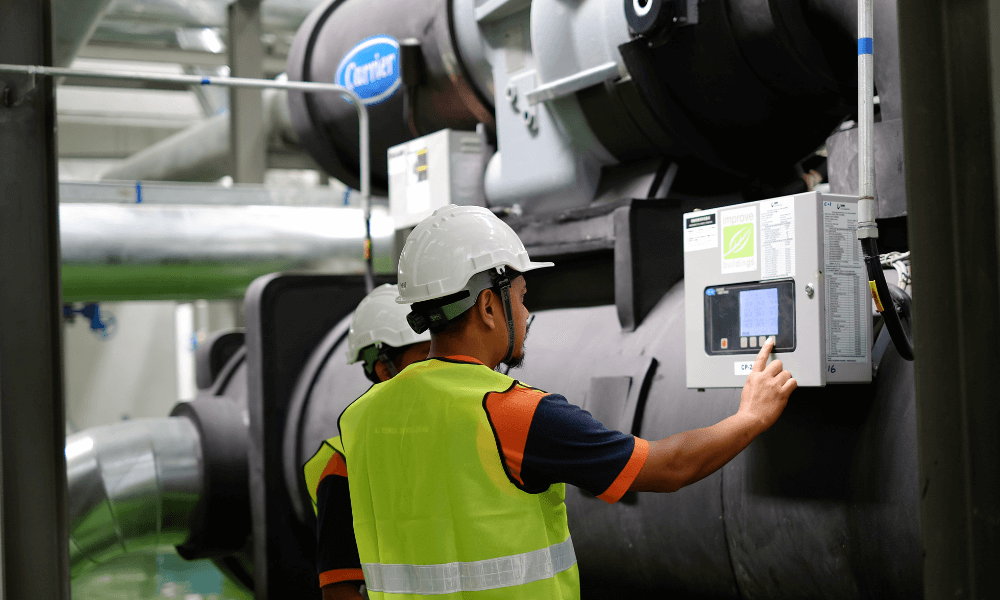
Innovations in Cooling Energy Management: A Look at the Latest Technological Advancements
Innovations in cooling energy management are at the forefront of sustainability efforts and technological advancements. As our world grapples with climate change and the increasing demand for energy-efficient solutions, the way we cool our spaces is evolving rapidly. From residential buildings to industrial complexes, the need for effective cooling systems that minimize energy consumption is more pressing than ever. In this blog post, we'll delve into some of the latest technological innovations that are shaping the future of cooling energy management.
Smart Thermostats and Building Automation Systems
One of the most significant developments in cooling energy management is the integration of smart thermostats and building automation systems. These technologies leverage data analytics and machine learning algorithms to optimize temperature control based on occupancy patterns, external weather conditions, and energy demand. By dynamically adjusting cooling settings in real-time, smart thermostats can significantly reduce energy wastage while maintaining occupant comfort. Building automation systems take this a step further by coordinating the operation of HVAC (heating, ventilation, and air conditioning) systems, lighting, and other building components to maximize energy efficiency.
Variable Refrigerant Flow (VRF) Systems
Variable refrigerant flow (VRF) systems offer a highly efficient alternative to traditional HVAC systems for both heating and cooling applications. Unlike conventional systems that operate at a fixed capacity, VRF systems adjust the flow of refrigerant to match the specific cooling or heating requirements of different zones within a building. This flexibility not only enhances comfort and precision but also reduces energy consumption by avoiding the energy losses associated with cycling on and off. Additionally, VRF systems use advanced heat recovery technology, allowing them to simultaneously provide heating and cooling to different areas of a building, further optimizing energy efficiency.
Passive Cooling Techniques
In addition to active cooling systems, passive cooling techniques are gaining attention for their ability to reduce reliance on mechanical cooling equipment. These strategies leverage natural phenomena such as airflow, solar radiation, and thermal mass to maintain comfortable indoor temperatures without the need for energy-intensive cooling systems. Examples of passive cooling techniques include natural ventilation, shading devices, cool roofs, and phase-change materials. By integrating these strategies into building design and retrofit projects, it's possible to significantly decrease cooling energy consumption while enhancing sustainability and resilience.
Thermal Energy Storage
Thermal energy storage (TES) systems play a crucial role in optimizing energy use and grid stability by shifting cooling energy demand to off-peak hours. These systems store excess thermal energy generated during periods of low demand and release it when needed, reducing the load on the grid during peak hours. TES systems can take various forms, including chilled water storage tanks, ice storage systems, and phase-change materials. By decoupling cooling energy production from consumption, TES systems enable greater flexibility and efficiency in managing energy resources.
Next-Generation Refrigerants
The choice of refrigerants used in cooling systems has a significant impact on both energy efficiency and environmental sustainability. As concerns over the global warming potential (GWP) and ozone depletion potential (ODP) of traditional refrigerants mount, researchers and industry professionals are exploring alternative options. Next-generation refrigerants, such as hydrofluoroolefins (HFOs) and natural refrigerants like carbon dioxide (CO2) and ammonia (NH3), offer lower GWP and ODP values while maintaining high performance. By transitioning to these environmentally friendly refrigerants, cooling systems can reduce their carbon footprint and contribute to climate change mitigation efforts.
In conclusion, the latest technological advancements in cooling energy management hold immense promise for improving efficiency, sustainability, and comfort in built environments. From smart thermostats and VRF systems to passive cooling techniques and thermal energy storage, these innovations are reshaping the way we approach temperature control. By embracing these technologies and strategies, we can create cooler, greener, and more resilient spaces for generations to come.
#CoolingEnergy #Sustainability #Technology #Innovation